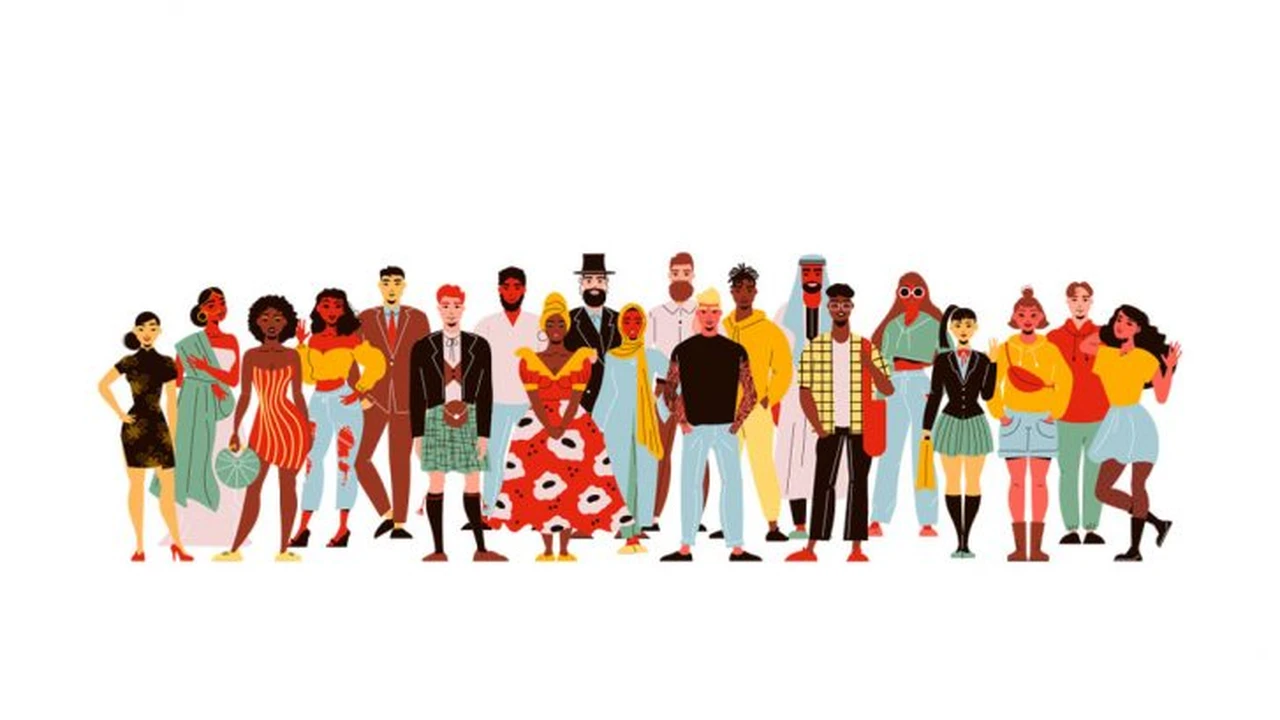5 Ways to Learn a European Language Before You Go: A US Traveler's Guide
Sample meta description.

Introduction Why Learn a European Language Before Traveling
So, you're heading to Europe! Awesome choice! But before you pack your bags and dream of croissants in Paris or pasta in Rome, let's talk language. Sure, you can get by with English in many tourist hotspots, but learning even a little bit of the local lingo will seriously enhance your experience. It's not just about ordering food (though that's a definite plus!). It's about connecting with locals, showing respect for their culture, and opening doors to experiences you wouldn't otherwise have. Think about it: wandering off the beaten path, striking up a conversation with a shopkeeper, understanding the nuances of a local festival… It all becomes richer and more meaningful when you speak a little of the language. Plus, it's just plain fun! This guide, written from the perspective of a US traveler who's been there and done that (and stumbled through plenty of awkward language exchanges), will give you practical tips on how to get started.
Way 1 Language Learning Apps Your Pocket-Sized Language Tutor
Okay, let's start with the obvious: language learning apps. These are a fantastic way to build a foundation, learn basic vocabulary and grammar, and get comfortable with pronunciation. They're also super convenient – you can practice on your commute, during your lunch break, or even while waiting in line at the airport. Think of them as your pocket-sized language tutor. But with so many apps out there, which one is right for you?
Duolingo The Gamified Learning Experience
Duolingo is probably the most well-known language learning app, and for good reason. It's free, fun, and uses a gamified approach to keep you motivated. You earn points, unlock new levels, and compete with friends. Duolingo is great for building a basic vocabulary and understanding simple grammar rules. It's particularly strong for languages like Spanish, French, German, and Italian. You can easily learn basic phrases like greetings, numbers, and food vocabulary. The app is free but offers a premium subscription for ad-free access and offline learning. The free version is perfectly adequate for beginners. Consider Duolingo if you need to learn basic phrases quickly and enjoy a game-like learning environment.
Babbel A More Structured Approach
Babbel is another popular app, but it takes a more structured approach than Duolingo. It focuses on real-life conversations and teaches you practical phrases you'll actually use. Babbel also offers more in-depth grammar explanations. While not free, Babbel offers a free trial and various subscription plans, usually around $10-$15 per month, depending on the length of the commitment. Babbel excels at teaching practical conversational skills and offering more in-depth grammar explanations. Its focus on real-life scenarios makes it a good choice for travelers who want to quickly learn how to communicate in everyday situations.
Memrise Vocabulary Building Powerhouse
Memrise is all about vocabulary. It uses mnemonics and spaced repetition to help you memorize words and phrases. It also features videos of native speakers, so you can hear how words are actually pronounced. Memrise's free version offers access to a wide range of user-created courses, while the premium subscription unlocks official courses and additional features. Prices vary but are typically around $9 per month. Memrise is ideal for expanding your vocabulary quickly and efficiently. The use of mnemonics and spaced repetition makes it particularly effective for memorizing new words and phrases.
Product Comparison and Recommendations
So, which app should you choose? It really depends on your learning style and budget. If you're looking for a free, fun, and gamified experience, Duolingo is a great option. If you want a more structured approach with a focus on real-life conversations, Babbel is a good choice. And if you want to build your vocabulary quickly, Memrise is the way to go. Many people use a combination of these apps to get the best of both worlds.
Way 2 Language Exchange Partners Practice Speaking with Native Speakers
Apps are great for building a foundation, but nothing beats practicing with native speakers. Language exchange partners are people who are learning your native language and want to practice speaking English. You can meet them online or in person, and you can help each other improve your language skills. It's a win-win situation! Plus, it's a great way to make new friends from around the world.
Finding Language Exchange Partners Online Platforms and Tools
There are several online platforms where you can find language exchange partners. Here are a few popular options:
* **HelloTalk:** HelloTalk is a language exchange app that connects you with native speakers from around the world. It has built-in translation tools and features like voice and video calls. * **Tandem:** Tandem is another popular language exchange app that focuses on authentic conversations. It also offers language tutoring services. * **ConversationExchange:** ConversationExchange is a website that connects language learners from all over the world. You can search for partners based on language, location, and interests.Tips for Successful Language Exchange
* **Be prepared:** Before your first language exchange session, think about what you want to talk about. Prepare some questions and topics in advance. * **Be patient:** It takes time to learn a new language. Don't get discouraged if you make mistakes. Just keep practicing! * **Be respectful:** Be respectful of your language exchange partner's culture and language. Avoid using slang or idioms that they might not understand. * **Be consistent:** Try to schedule regular language exchange sessions. The more you practice, the faster you'll improve.Way 3 Immersive Language Courses Intensive Learning for Rapid Progress
If you're serious about learning a European language quickly, consider taking an immersive language course. These courses typically involve several hours of instruction per day, and they often include cultural activities and excursions. Immersion is a highly effective way to learn a language because you're constantly surrounded by the language and culture.
Types of Immersive Language Courses Options and Considerations
There are several types of immersive language courses available. Here are a few options:
* **University courses:** Many universities offer intensive language courses during the summer or academic year. These courses are often more academic in nature and focus on grammar and vocabulary. * **Private language schools:** There are many private language schools that offer immersive language courses. These courses are often more focused on practical communication skills. * **Homestay programs:** Some language schools offer homestay programs, where you live with a local family. This is a great way to experience the culture firsthand and practice your language skills in a real-life setting.Factors to Consider When Choosing a Course
* **Your budget:** Immersive language courses can be expensive, so it's important to consider your budget. * **Your learning style:** Some courses are more academic, while others are more practical. Choose a course that matches your learning style. * **Your goals:** What do you want to achieve by taking the course? Do you want to become fluent, or do you just want to learn enough to get by? * **The location:** Do you want to study in a big city or a small town? Choose a location that appeals to you.Way 4 Travel Phrasebooks and Dictionaries Your On-the-Go Language Companions
Even if you don't have time to take a language course or find a language exchange partner, you can still learn some basic phrases before you go. Travel phrasebooks and dictionaries are a great way to learn essential vocabulary and phrases for common situations, such as ordering food, asking for directions, and checking into a hotel. They're also small and lightweight, so you can easily carry them with you on your trip.
Recommended Phrasebooks and Dictionaries Brands and Features
* **Lonely Planet Phrasebooks:** Lonely Planet offers phrasebooks for a wide range of languages. They include essential phrases, pronunciation guides, and cultural tips. * **Rick Steves Phrasebooks:** Rick Steves phrasebooks are specifically designed for travelers. They include practical phrases, cultural insights, and travel tips. * **Oxford Dictionaries:** Oxford Dictionaries offers comprehensive dictionaries for many languages. They include definitions, pronunciations, and example sentences.Digital vs Physical Phrasebooks
Consider whether you prefer a physical or digital phrasebook. Physical books don't require batteries or internet access, making them reliable in any situation. However, digital phrasebooks on your smartphone are convenient and often include audio pronunciation. A digital phrasebook like Google Translate can be helpful, but remember that its accuracy can vary.
Way 5 Cultural Immersion Through Media Music, Movies, and More
Learning a language isn't just about memorizing vocabulary and grammar rules. It's also about immersing yourself in the culture. Watching movies, listening to music, and reading books in your target language can help you improve your listening comprehension, expand your vocabulary, and learn about the culture. It's also a fun and enjoyable way to learn!
Music Recommendations Artists and Genres
Music is a great way to learn a language because it's repetitive and catchy. Listen to popular artists in your target language and try to sing along. Pay attention to the lyrics and look up any words you don't understand. Some popular artists to consider include:
* **Spanish:** Rosalia, Enrique Iglesias, Shakira * **French:** Stromae, Daft Punk, Edith Piaf * **Italian:** Eros Ramazzotti, Laura Pausini, Andrea Bocelli * **German:** Rammstein, Nena, KraftwerkMovie and TV Show Suggestions For Language Learners
Watching movies and TV shows in your target language is another great way to improve your listening comprehension and learn about the culture. Start with subtitles and gradually try to watch without them. Some popular movies and TV shows to consider include:
* **Spanish:** "La Casa de Papel" (Money Heist), "Pan's Labyrinth", "Volver" * **French:** "Amelie", "Call My Agent!", "The Intouchables" * **Italian:** "Life is Beautiful", "The Great Beauty", "Gomorrah" * **German:** "Dark", "Goodbye Lenin!", "The Lives of Others":max_bytes(150000):strip_icc()/277019-baked-pork-chops-with-cream-of-mushroom-soup-DDMFS-beauty-4x3-BG-7505-5762b731cf30447d9cbbbbbf387beafa.jpg)






